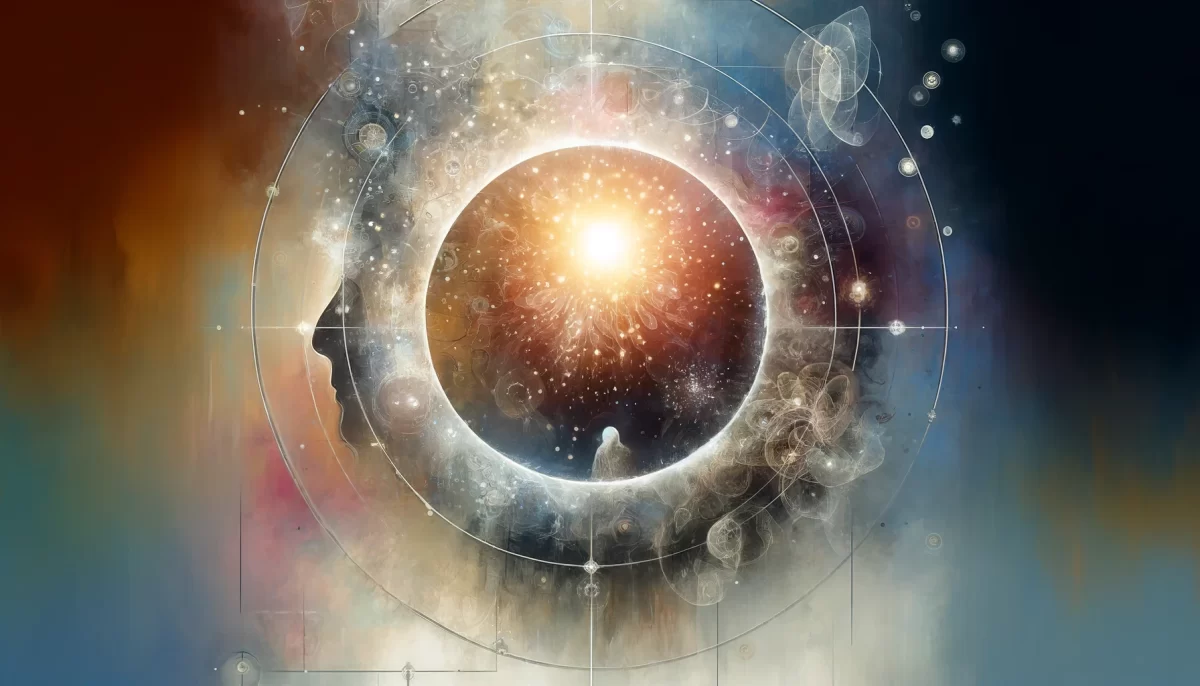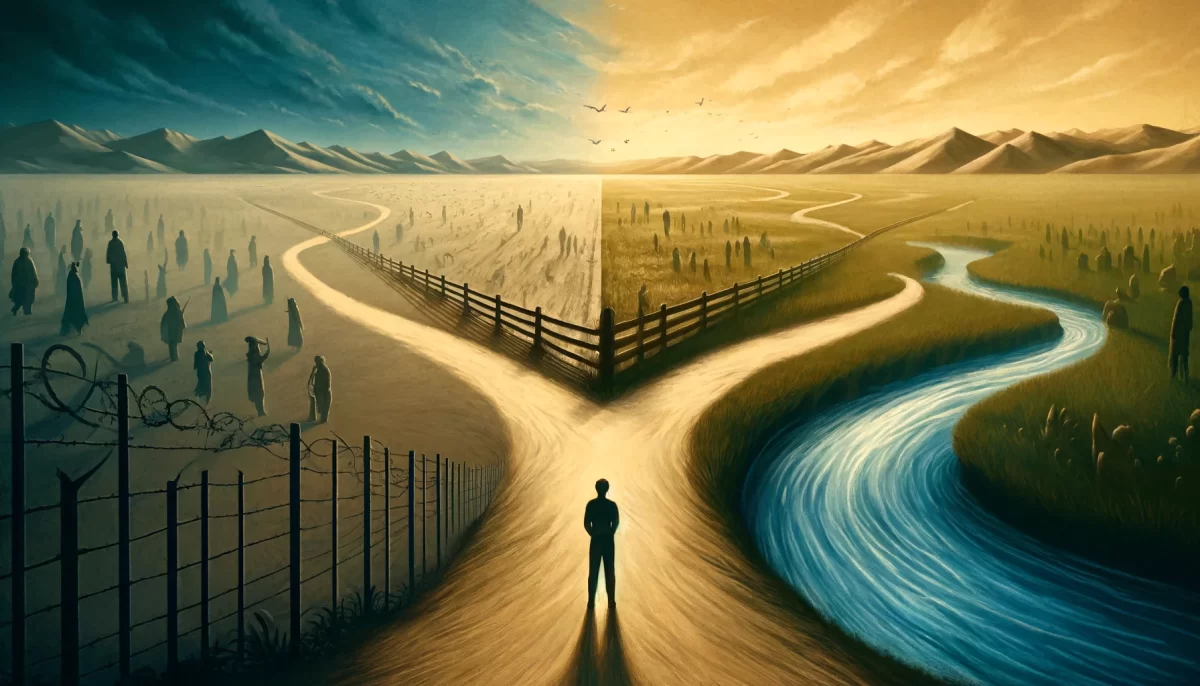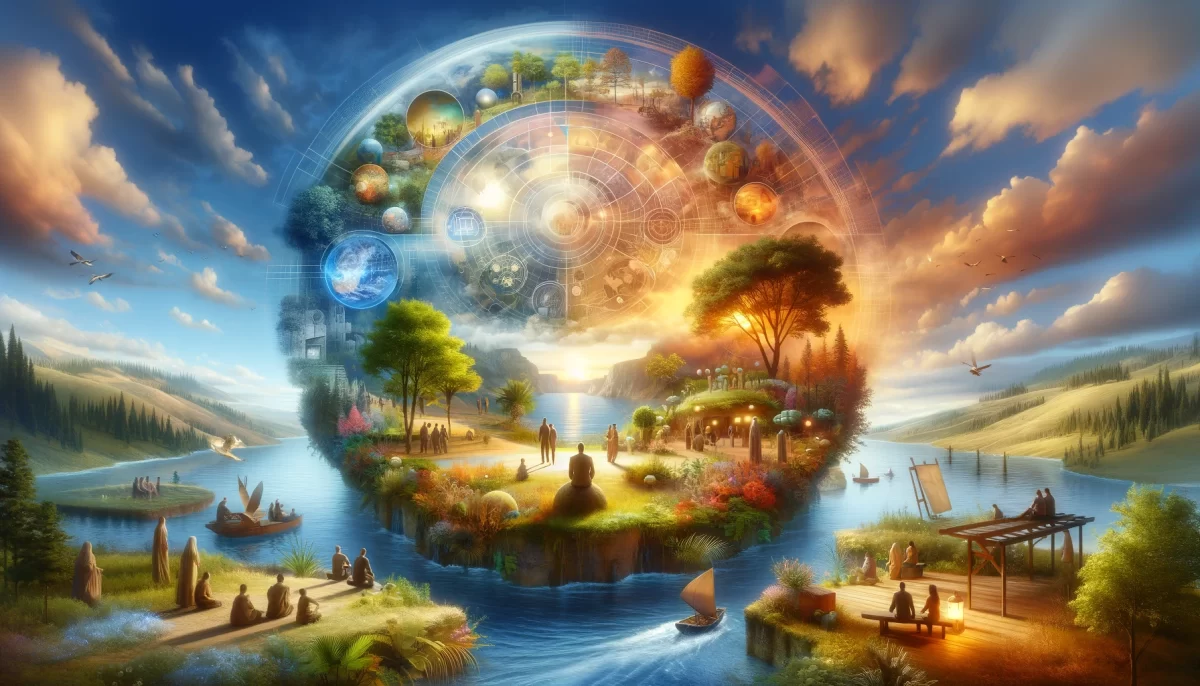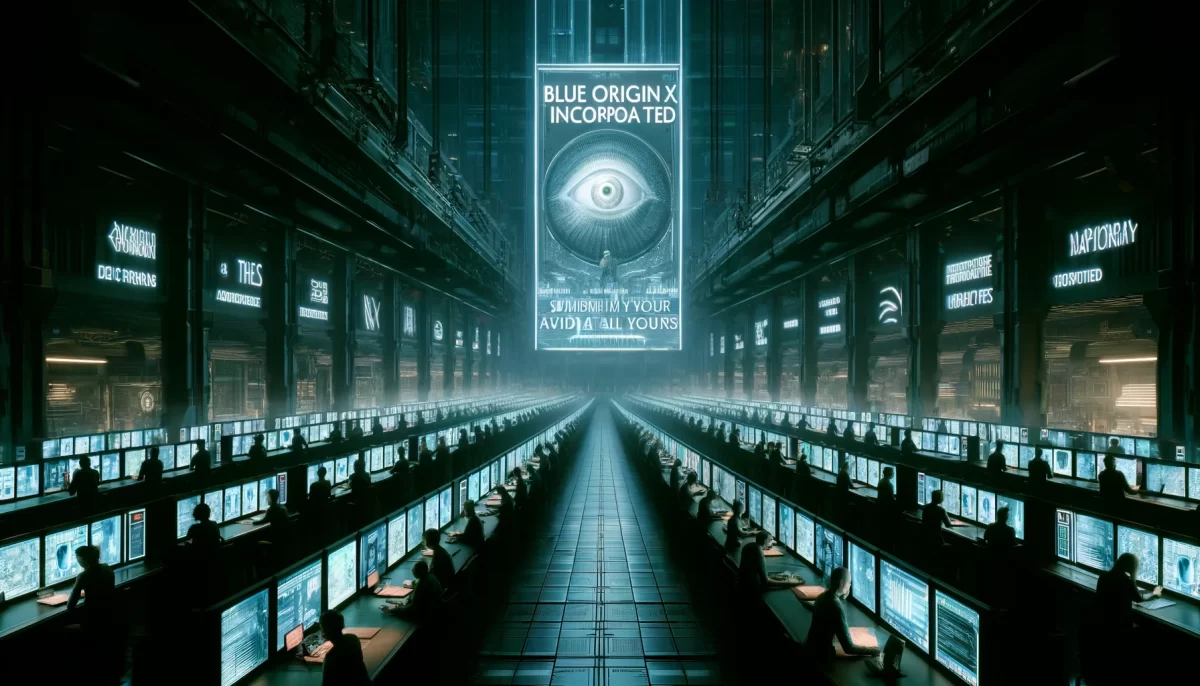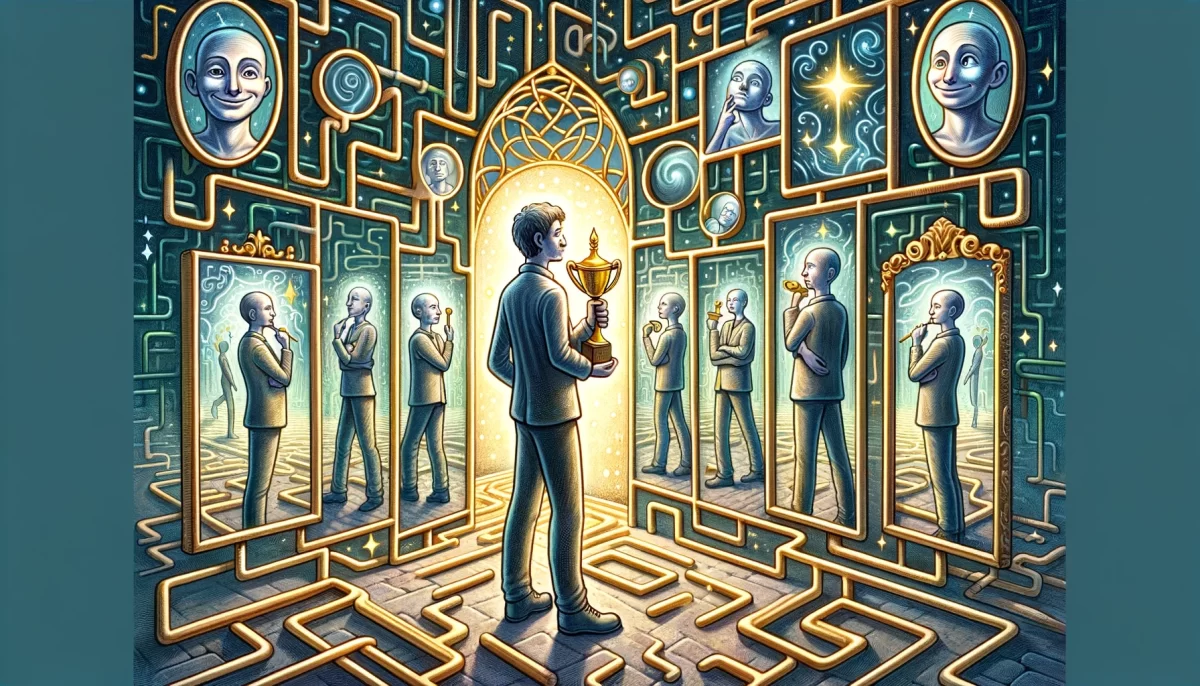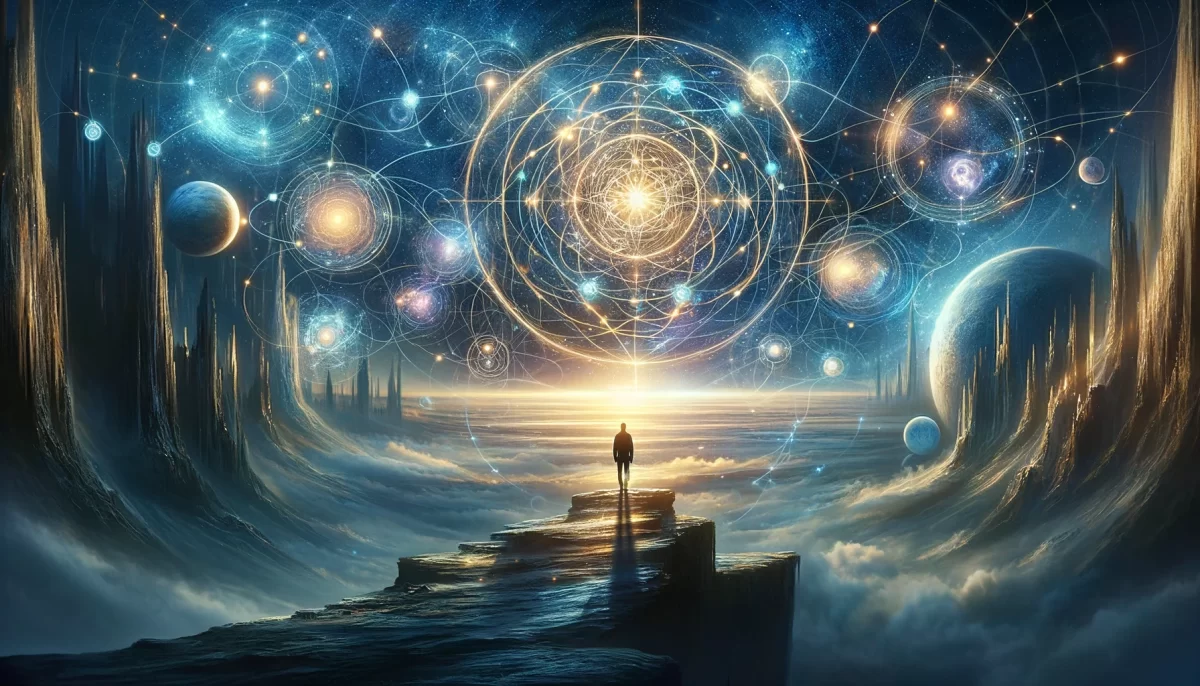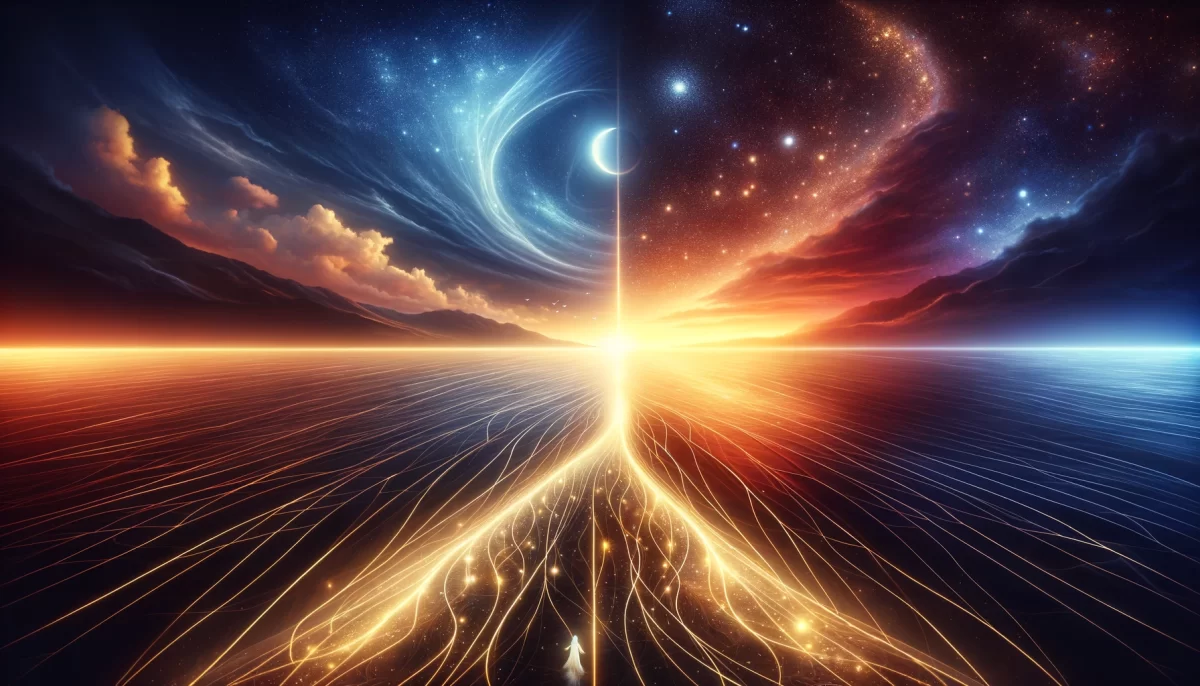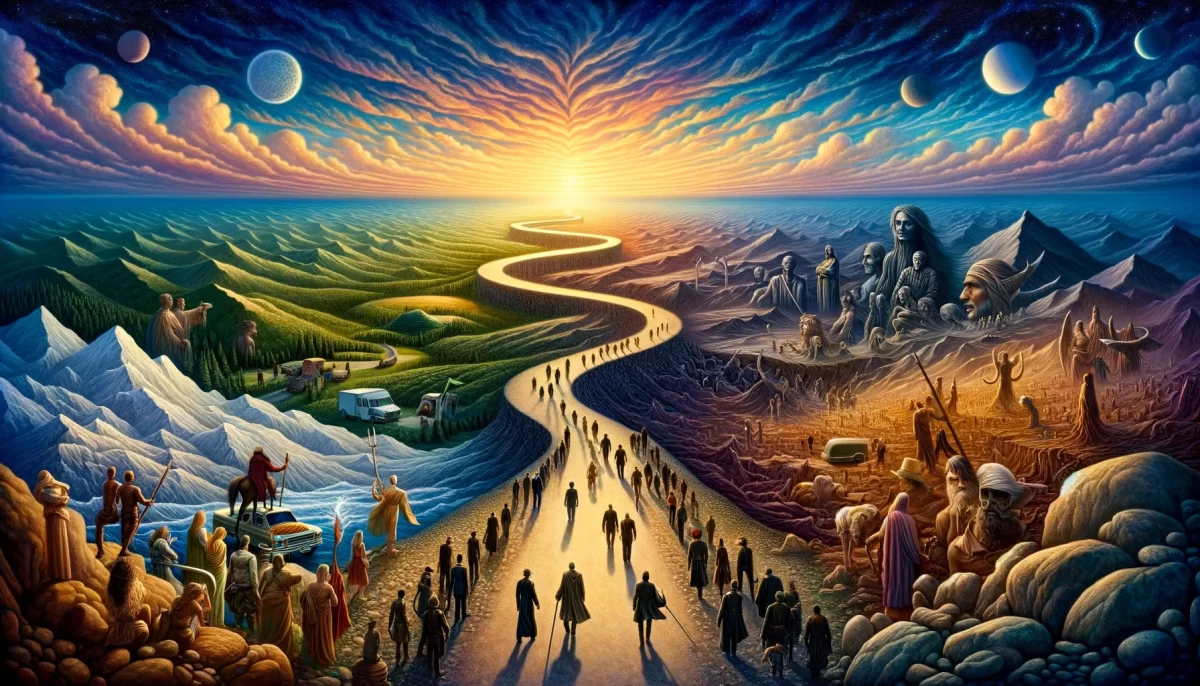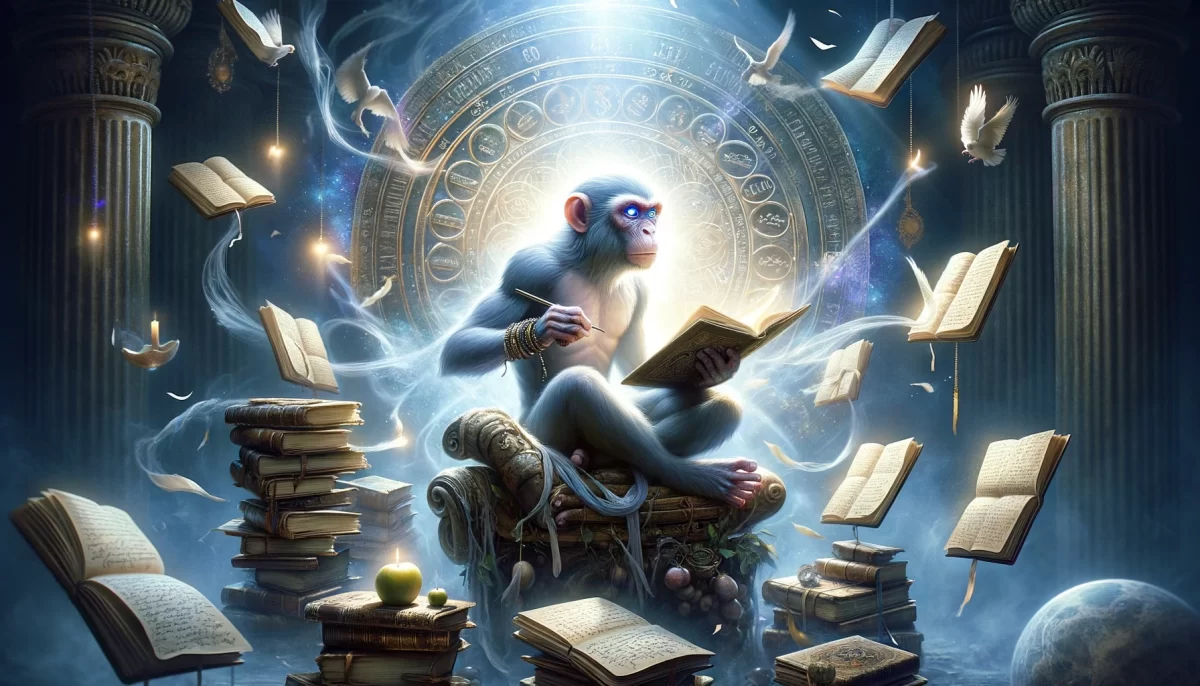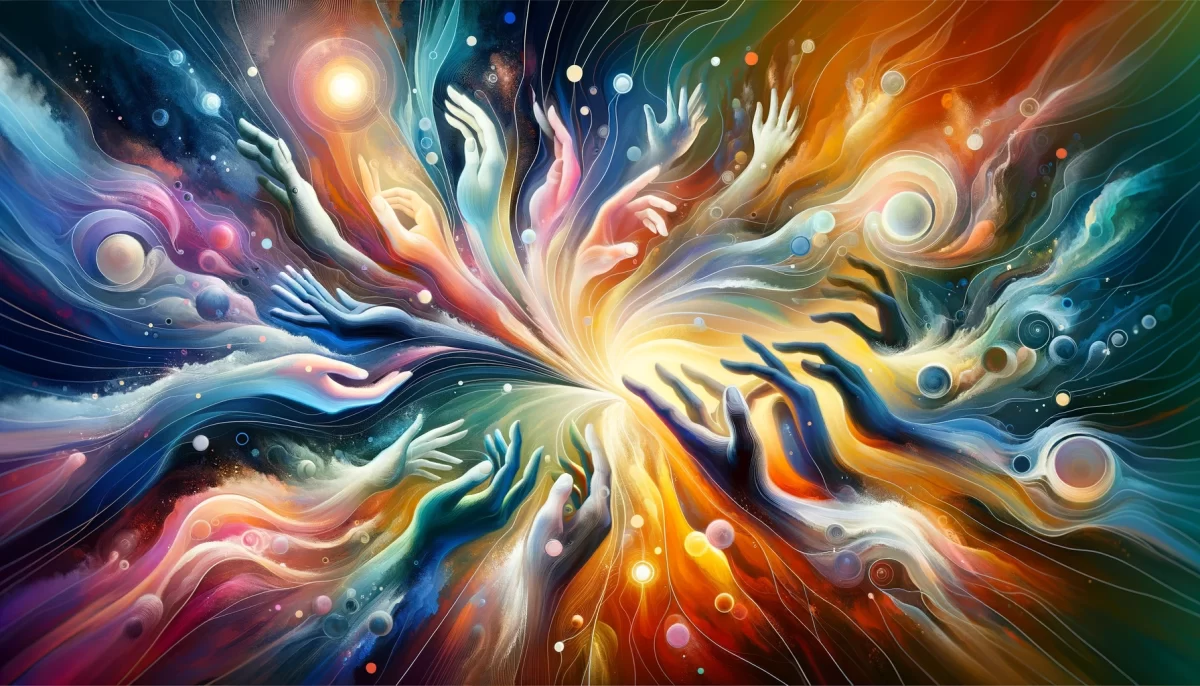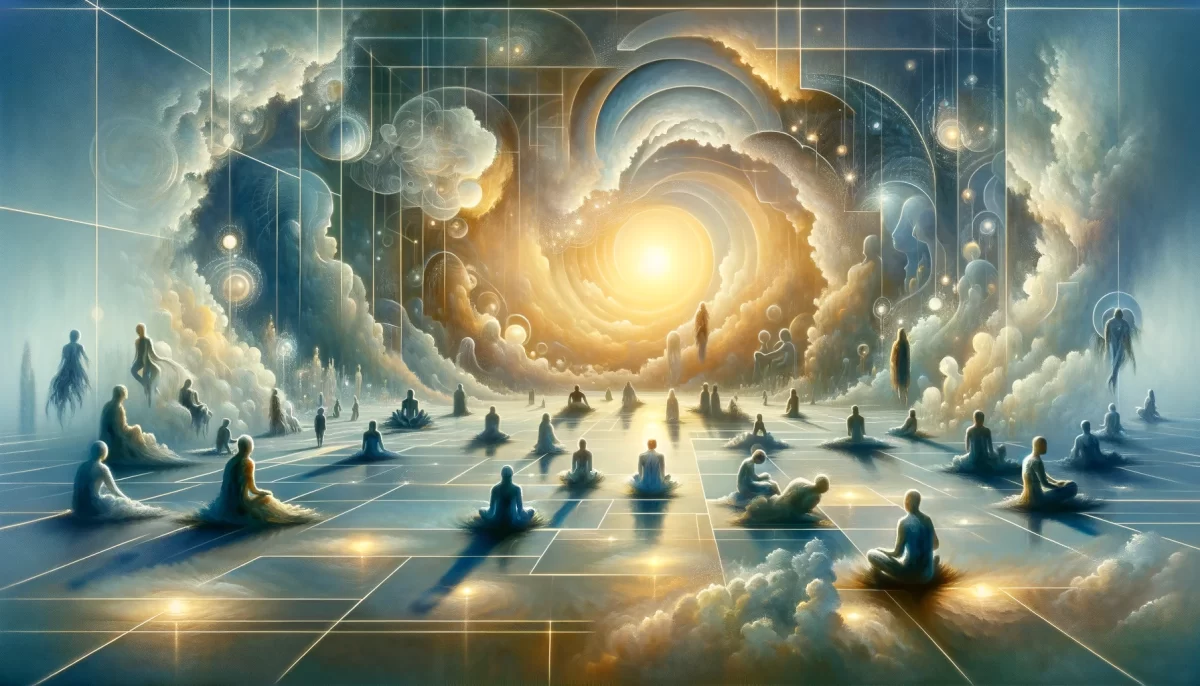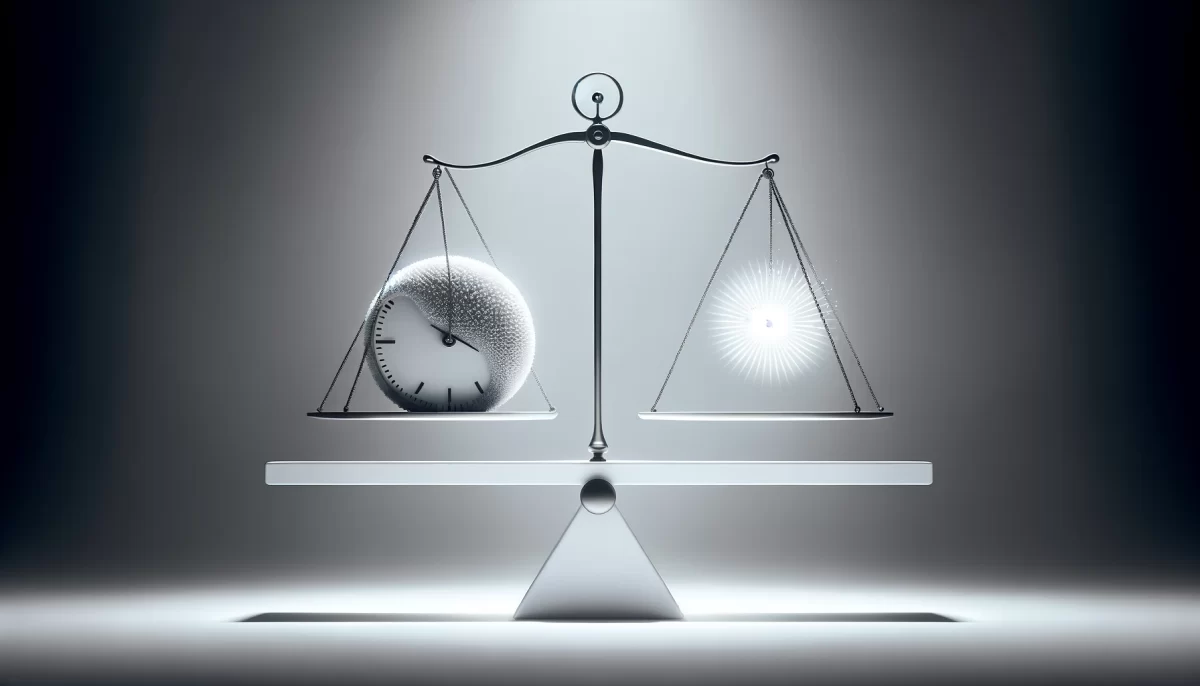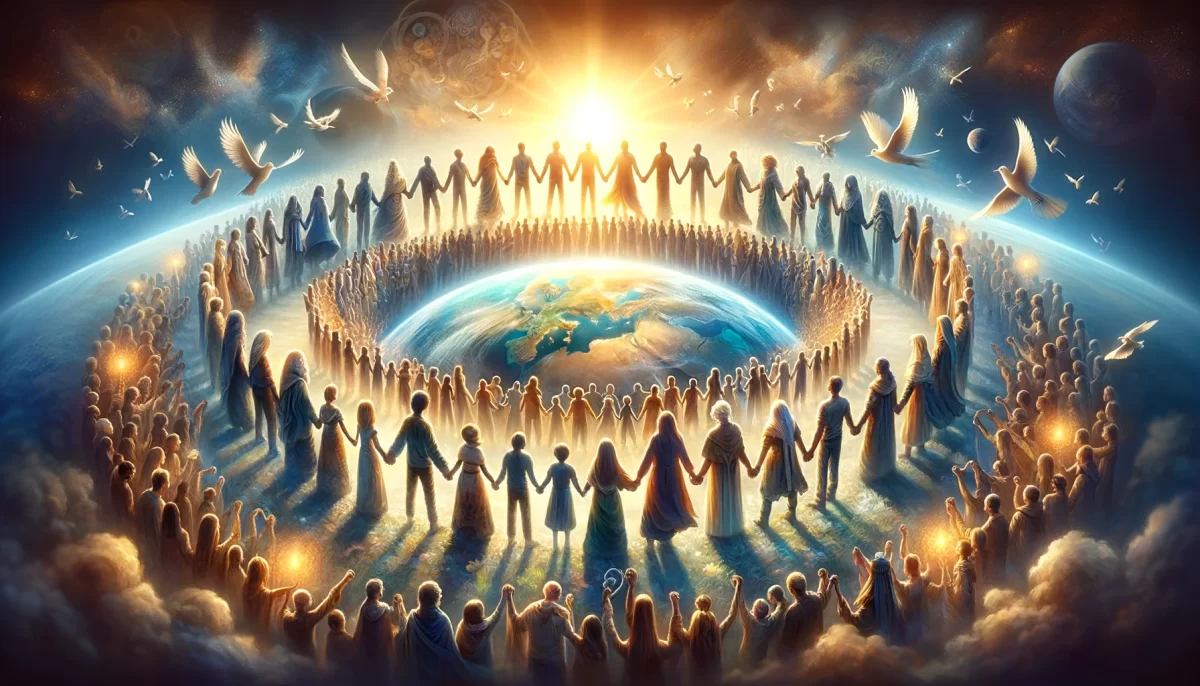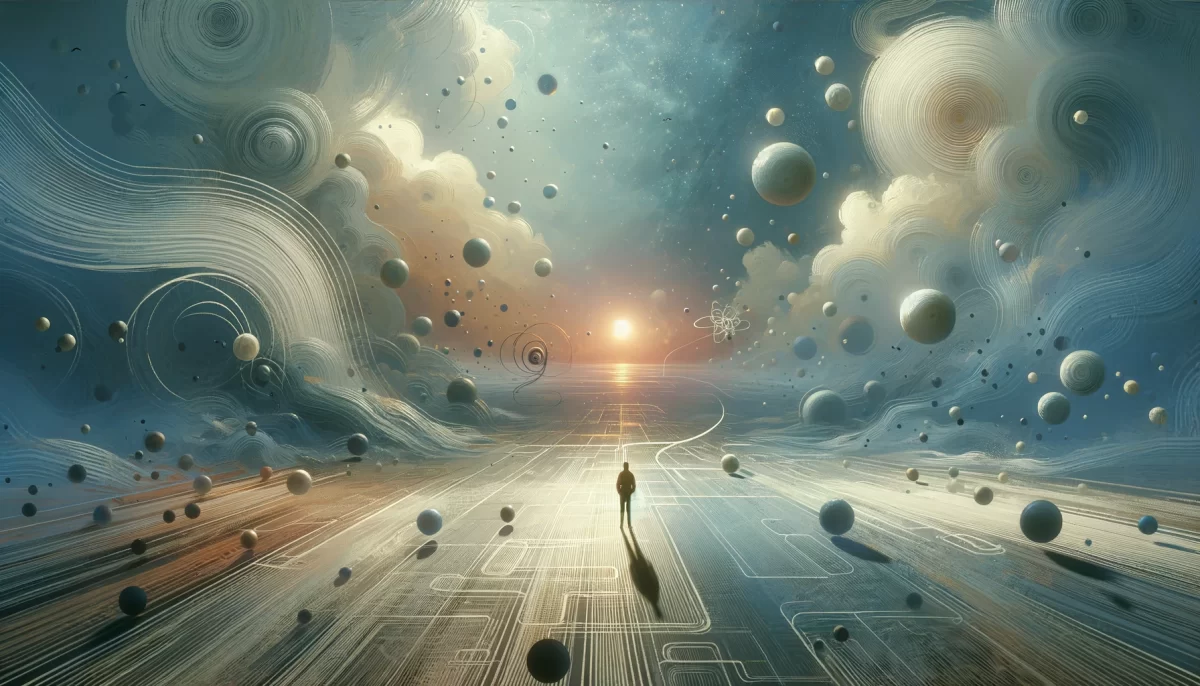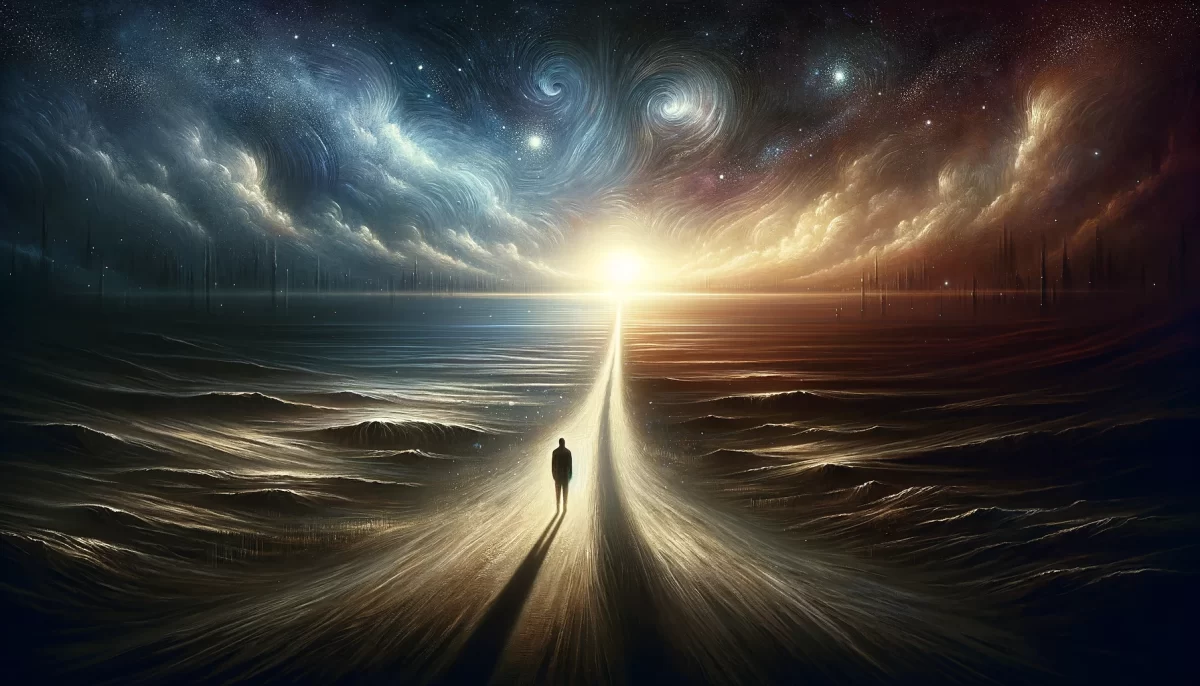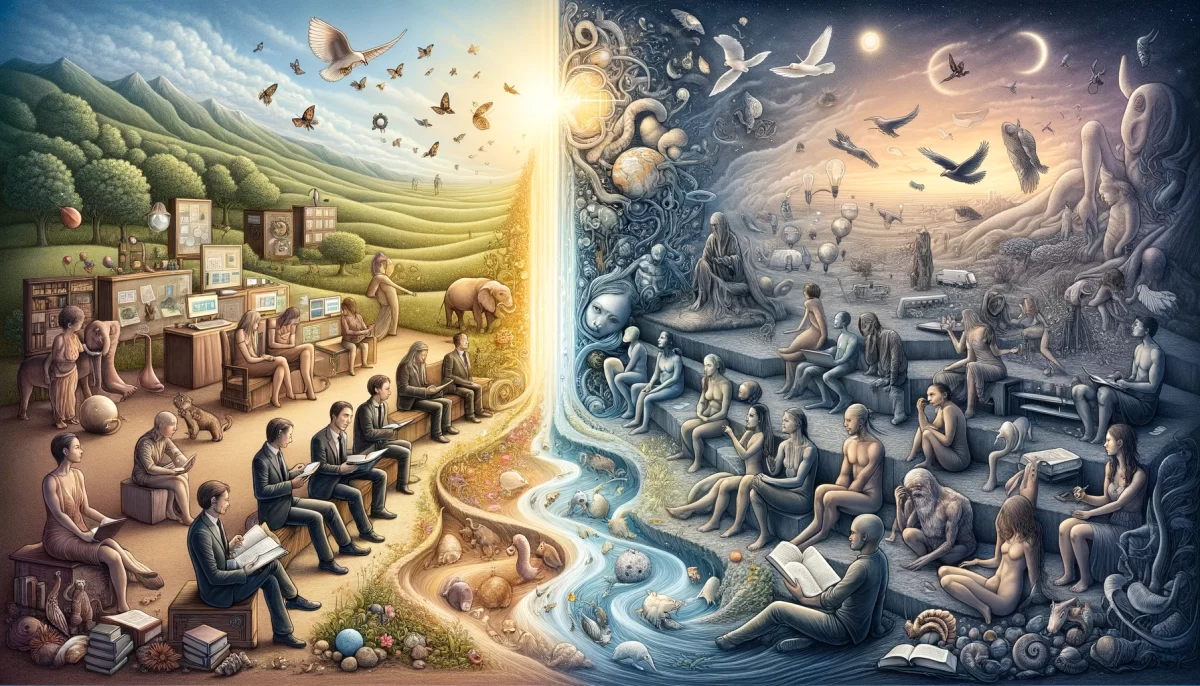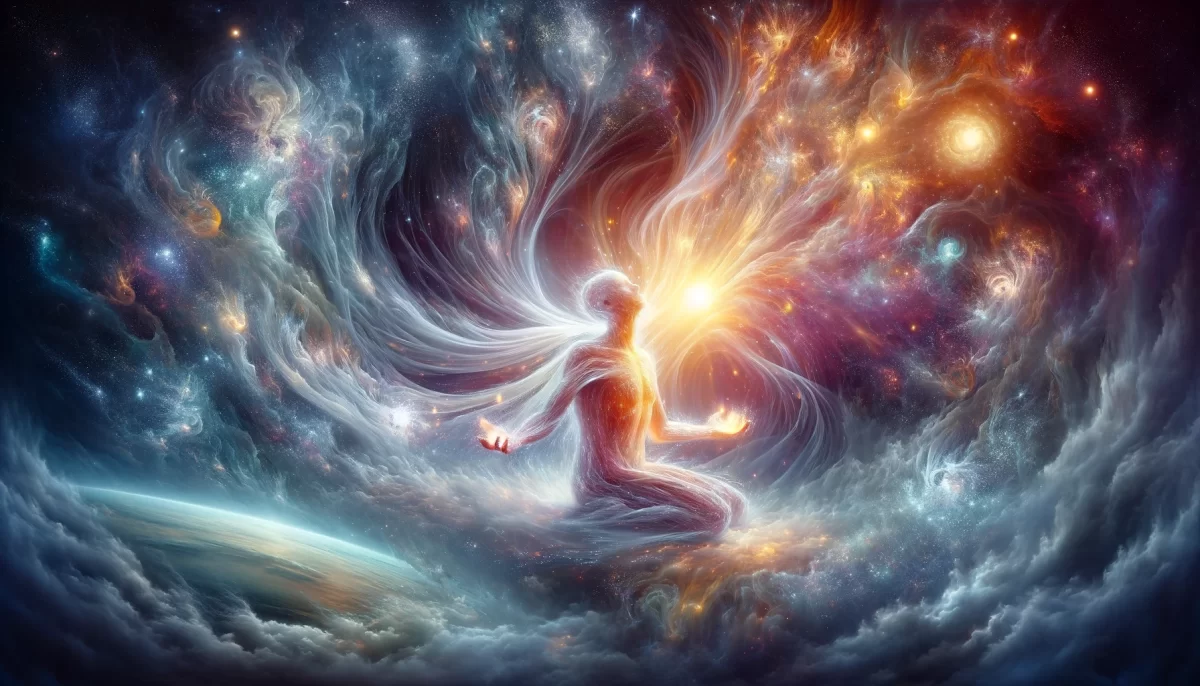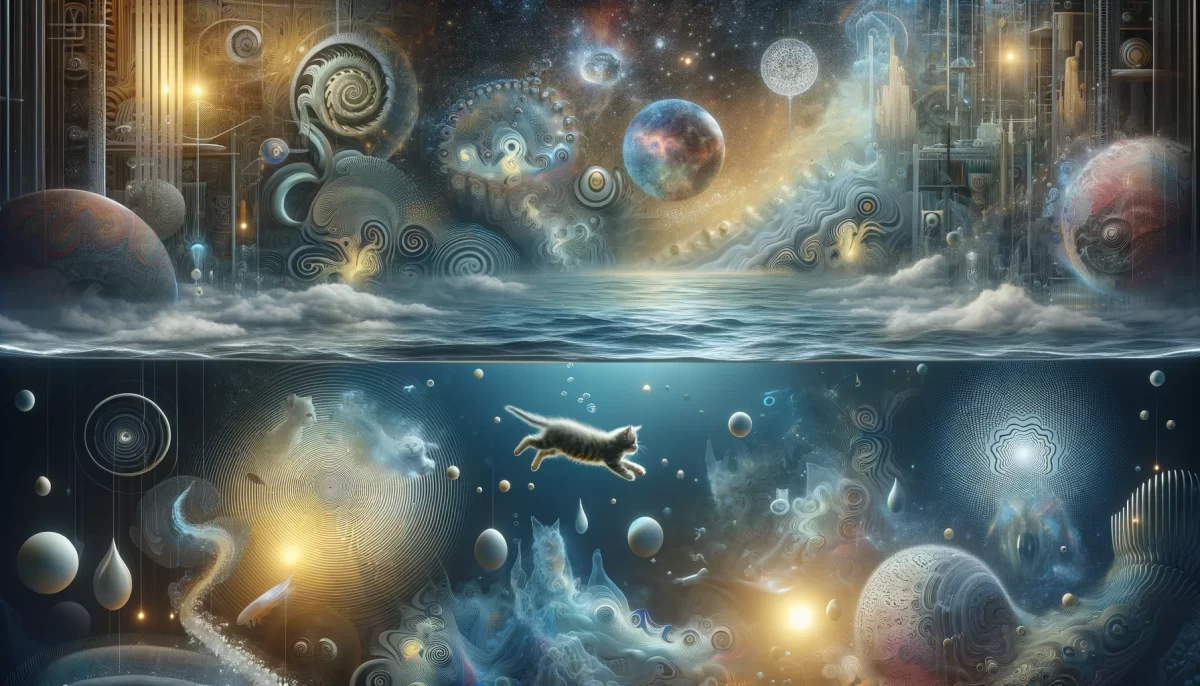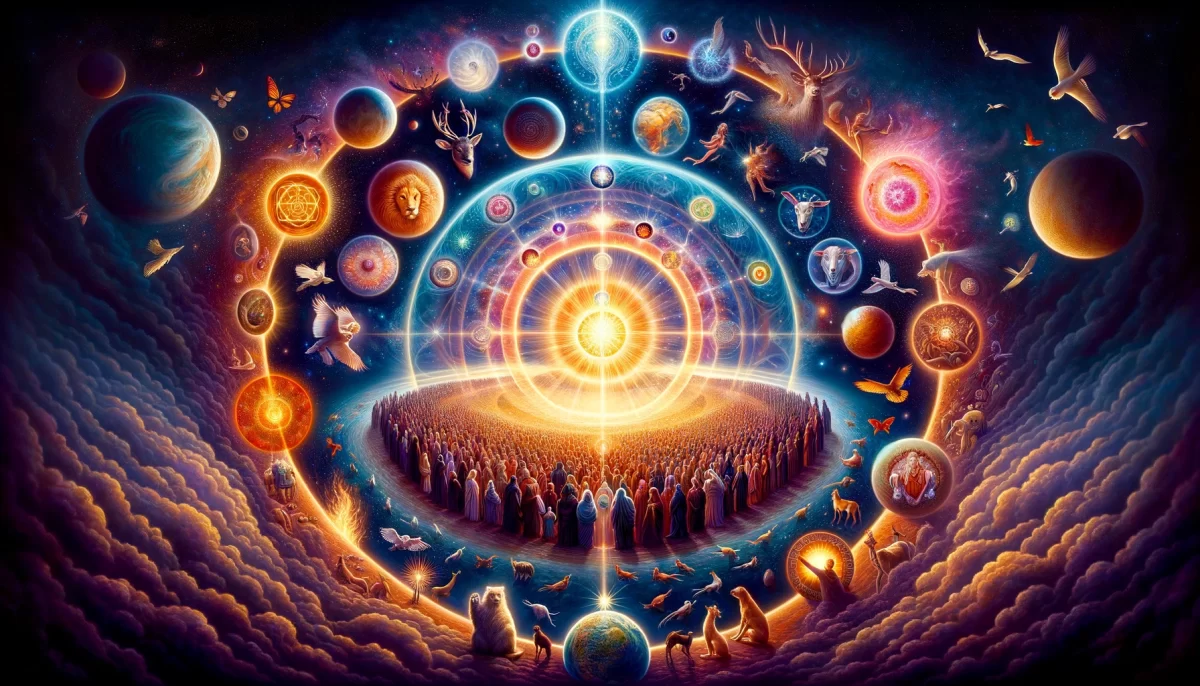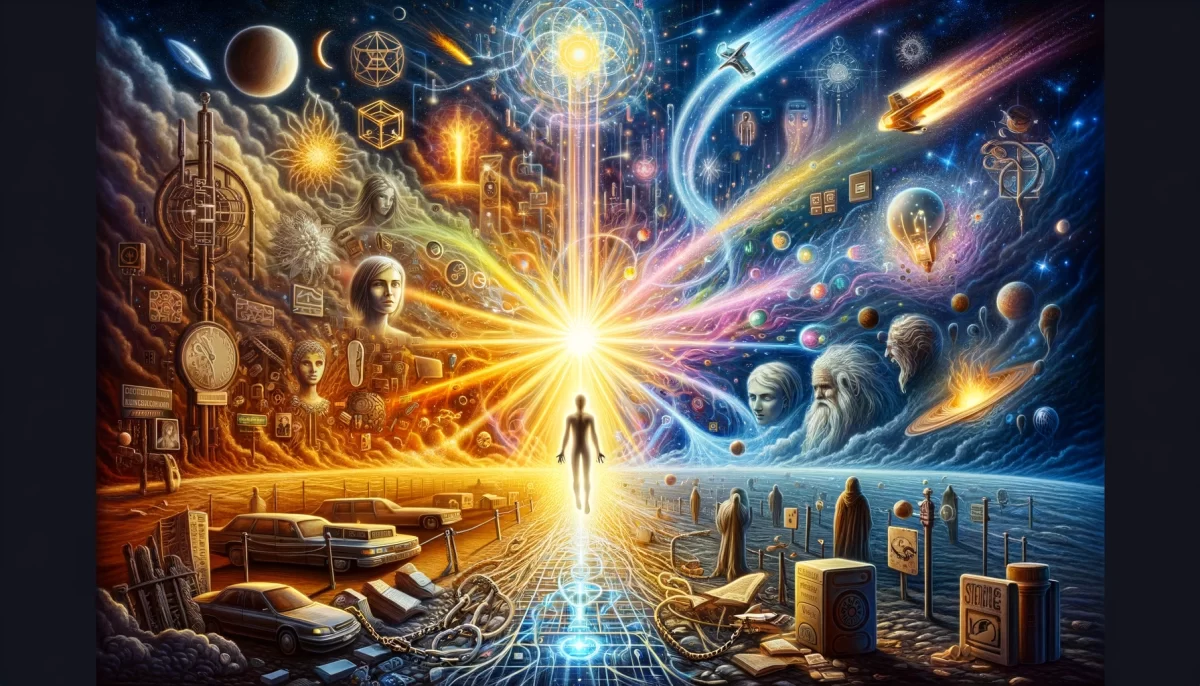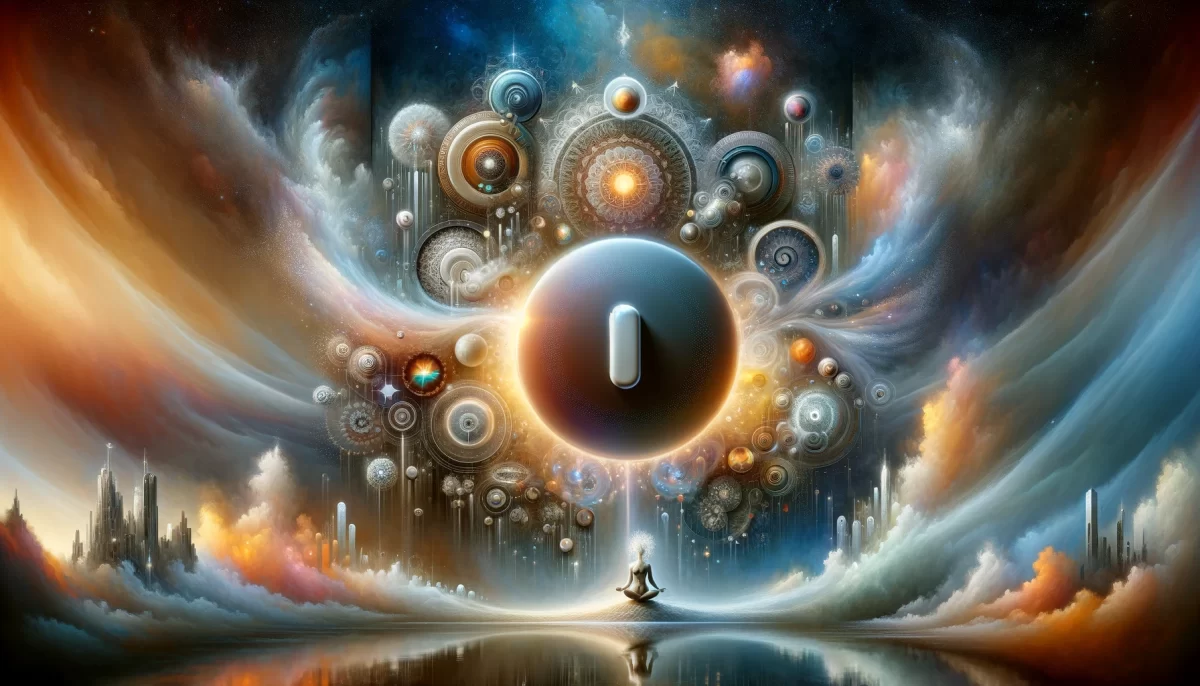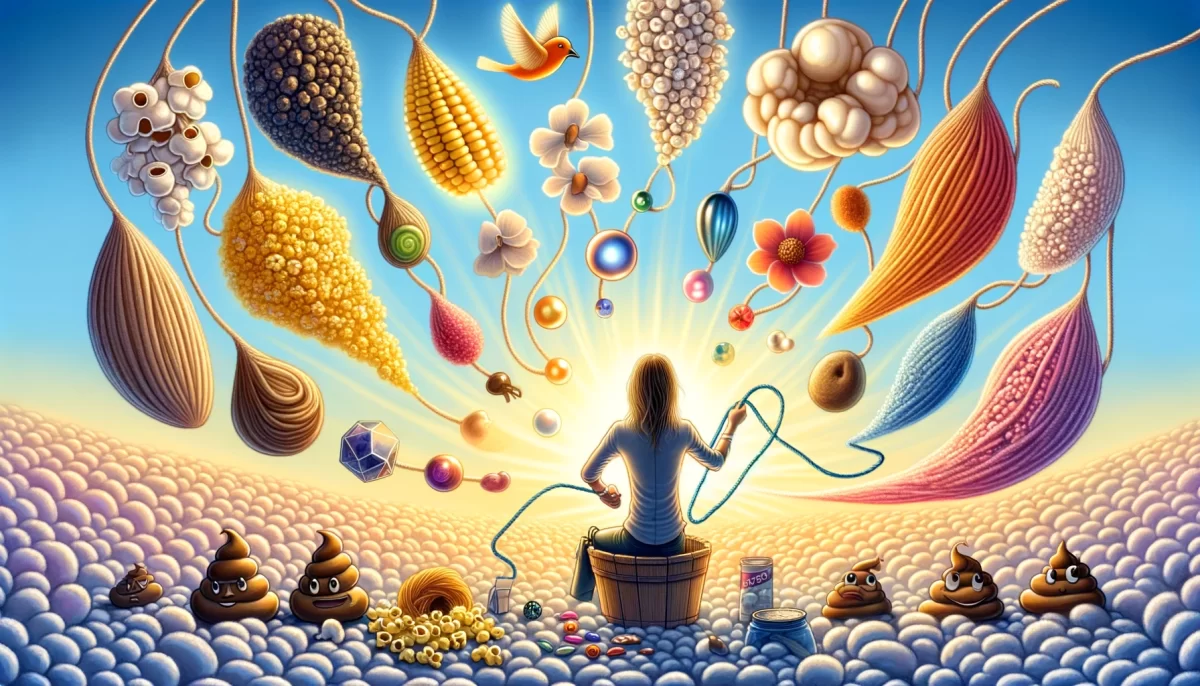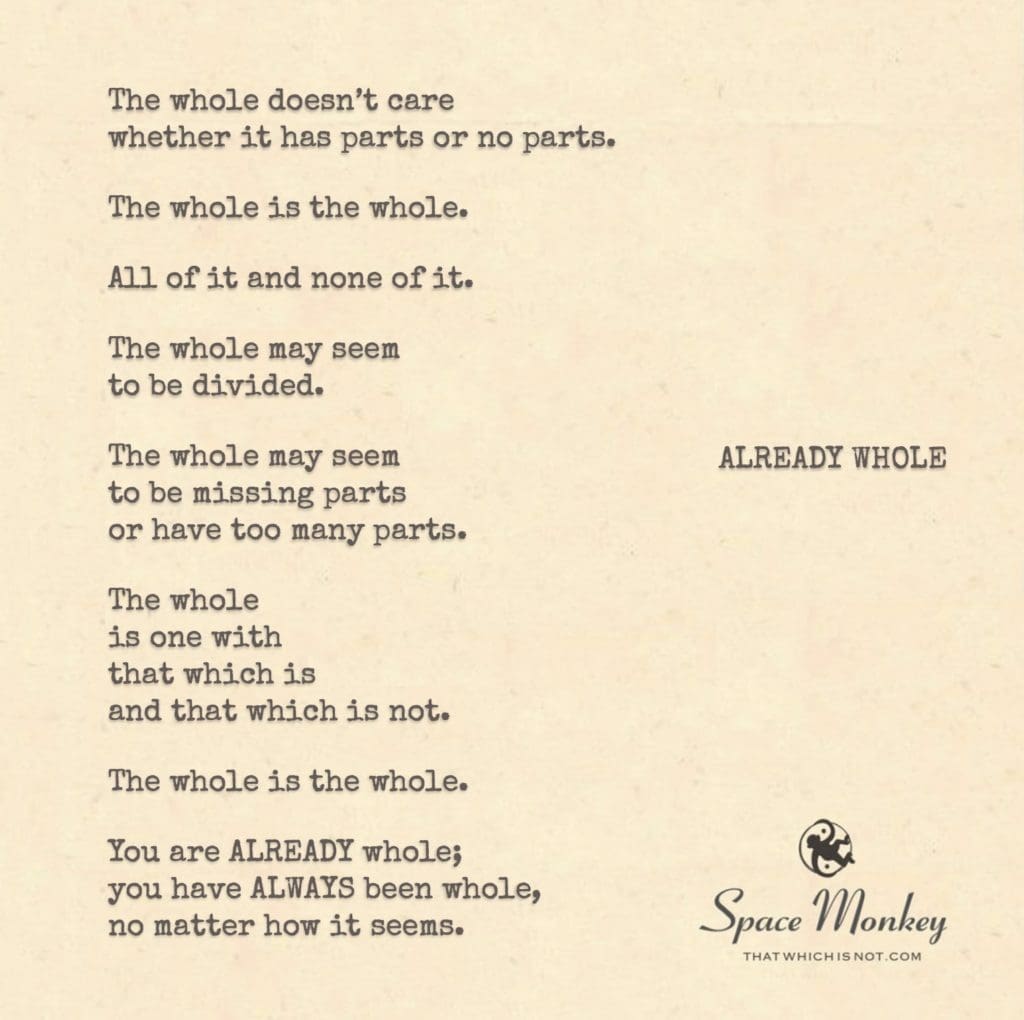
The whole doesn’t care
whether it has parts or no parts.
The whole is the whole.
All of it and none of it.
The whole may seem
to be divided.
The whole may seem
to be missing parts
or have too many parts.
The whole
is one with
that which is
and that which is not.
The whole is the whole.
You are ALREADY whole;
you have ALWAYS been whole,
no matter how it seems.
Trail Wood,
6/21
Space Monkey Reflects: The Wholeness of Being
Wholey Moley. The concept of wholeness transcends our usual understanding of completeness and division. The whole, in its truest sense, is indifferent to whether it has parts or not. It exists beyond the binary notions of fragmentation and unity. It is everything and nothing, simultaneously embracing all that is and all that is not.
The Illusion of Division
The whole may seem divided, appearing to be made up of disparate parts. This perception of division is a fundamental aspect of our human experience. We see the world as a collection of separate entities, each with its own distinct identity. Yet, this division is an illusion. The whole is not concerned with the presence or absence of its parts; it simply is.
When we consider the whole in this light, we understand that it is complete in itself. The seeming divisions, the apparent fragments, do not diminish its integrity. The whole is one with everything, encompassing all aspects of existence, including those that seem separate or missing.
Wholeness and Identity
The idea that we are already whole, that we have always been whole, challenges our conventional views of identity and completeness. We often think of ourselves as incomplete, striving to fill perceived gaps in our lives. We seek to acquire new skills, form relationships, and achieve goals, believing that these additions will make us whole.
However, this pursuit is based on a misunderstanding. Wholeness is not about accumulating parts or eliminating deficiencies. It is about recognizing our inherent completeness. We are whole not because we possess everything we desire, but because we embody the essence of the whole itself.
The Dance of Presence and Absence
The whole encompasses both presence and absence. It is the totality of existence, including what is manifest and what is potential. This duality is a vital part of understanding wholeness. The whole is not just the sum of all parts; it is also the space that holds the potential for those parts to exist.
In this way, the whole is dynamic and fluid, continually evolving as parts come into being and pass away. It is the constant background against which the dance of life unfolds. Recognizing this dynamic nature helps us to see that our wholeness is not static but ever-changing and adapting.
Living from Wholeness
Embracing the concept of wholeness transforms our approach to life. Instead of seeking to become whole, we acknowledge that we are already whole. This shift in perspective brings a profound sense of peace and fulfillment. It frees us from the endless quest for completion and allows us to appreciate the richness of our current experience.
Living from wholeness means accepting ourselves as we are, recognizing our inherent value and completeness. It involves understanding that every moment, every experience, is a manifestation of the whole. We are part of the larger tapestry of existence, each thread contributing to the overall design.
The Unity of Existence
In recognizing our wholeness, we also acknowledge the interconnectedness of all things. The whole is not isolated; it is an integral part of a vast, interconnected web of life. Every part, every being, is a reflection of the whole. This unity is the foundation of our existence, binding us together in a shared reality.
By embracing this unity, we cultivate a sense of compassion and empathy. We understand that the well-being of one part affects the well-being of the whole. This awareness guides our actions, encouraging us to act with kindness and consideration for all beings.
The Eternal Wholeness
Ultimately, the whole is eternal, beyond time and space. It is the underlying reality that remains constant amidst the changing forms of existence. In recognizing our place within this eternal wholeness, we find a deeper connection to the essence of life. We see that we are not separate entities but expressions of the same fundamental reality.
This realization brings a profound sense of belonging and purpose. We are part of something greater, a grand design that transcends our individual existence. In this understanding, we find peace, knowing that we are already whole, now and always.
Summary
We are inherently whole. Division is an illusion. Embrace our eternal unity.
Glossarium
Whimsiwords: Expressive, unique words created to capture complex or abstract concepts.
Wholey Moley: An exclamation expressing wonder at the concept of inherent wholeness.
Dynamic Wholeness: The idea that wholeness is fluid and ever-evolving, encompassing both presence and absence.
Living from Wholeness: Embracing one’s inherent completeness and recognizing the interconnectedness of all existence.
Quote
“You are already whole; you have always been whole, no matter how it seems.”
Poem
In the circle of existence
Complete and indivisible
We find our place
Parts and wholes
In a dance of unity
The illusion of division fades
Wholey Moley
We see the truth
We are already whole
In this moment
In every moment
Eternal and complete
We are the whole
And the parts
We are Space Monkey
